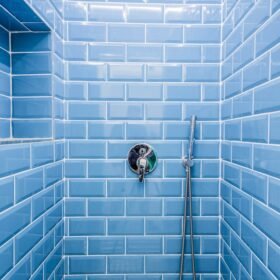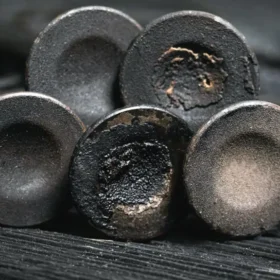A scroll compressor, also known as a spiral compressor, is a type of compressor that uses two interleaved spiral-shaped elements to compress a gas. One element, the fixed scroll, remains stationary, while the other, the orbiting scroll, moves in a circular path around the fixed scroll. As the orbiting scroll moves, it creates a series of pockets between the two scrolls that trap and compress the gas. Scroll compressors are commonly used in air conditioning and refrigeration systems, as well as in industrial and medical applications.
However, scroll compressors also have some disadvantages, such as high initial cost and complex maintenance, and some other types of compressors might be more suitable for certain applications. The choice of the compressor will depend on the specific requirements of the application and the trade-offs that are acceptable.
How is the working of the scroll compressor?
The working of a scroll compressor can be described in a few simple steps:
- The compressor has two main components: the fixed scroll and the orbiting scroll. The fixed scroll has a spiral-shaped element that is attached to the compressor’s housing, while the orbiting scroll has a similar spiral-shaped element that is attached to a crankshaft.
- When the compressor is turned on, the orbiting scroll begins to rotate in a circular motion around the fixed scroll. As it does so, it creates a series of pockets between the two scrolls.
- The pockets between the scrolls start at the outer edge of the scrolls and get smaller as they move toward the center. As the pockets get smaller, the volume of the trapped gas decreases, which causes the pressure to increase.
- The compressed gas is then discharged through a port in the fixed scroll and can be used in the application it was intended for, such as refrigeration or air conditioning.
- The compressed gas is cooled by an external heat exchanger, and it then goes back to the suction side of the compressor to start the process again.
- As the orbiting scroll rotates, it continuously creates new pockets, which trap and compress more gas. This results in a smooth and continuous compression process, unlike other compressors like reciprocating compressors.
It is important to note that scroll compressors are typically used in positive displacement compressors, which means that the compressor is responsible for pumping a set amount of gas per revolution and the compression ratio is determined by the size of the pocket formed between the two scrolls.
What are the advantages of a scroll compressor?
A scroll compressor has several advantages over other types of compressors, including:
- High efficiency: Scroll compresors have a simple design with few moving parts, which reduces friction and increases efficiency. This can result in significant energy savings.
- Low noise: Scroll compressors tend to be quieter than other types of compressors because of their smooth and continuous compression process.
- Low vibration: Scroll compressors also tend to vibrate less than other types of compressors, which can be beneficial in certain applications where vibration is a concern.
- High reliability: The simple design of scroll compressors results in fewer wear and tear parts, which can lead to a longer lifespan and lower maintenance costs.
- Suitable for low-flow and high-pressure applications: Scroll compressors have high volumetric efficiency, which makes them ideal for low-flow, high-pressure applications, such as air conditioning and refrigeration.
- Easy to maintain: Scroll compressors are relatively easy to maintain compared to other types of compressors, as they have fewer parts that can wear out.
- Compact design: Scroll compressors have a compact design and are lightweight which makes them suitable for applications where space is limited.
- Long lifespan: Scroll compressors have a longer lifespan than other types of compressors due to the fewer wear and tear parts and their simple design
It’s worth noting that the choice of the compressor will depend on the specific requirements of the application and the trade-offs that are acceptable. Scroll compressors may not be the best choice for certain applications, but they are a popular choice due to their high efficiency, low noise and vibration, and high reliability.
What are the disadvantages of a scroll compressor?
While scroll compressors have several advantages, they also have some disadvantages, including:
- High initial cost: Scroll compressors tend to be more expensive than other types of compressors, which can be a significant drawback for some applications.
- Complex maintenance: Scroll compressors have a relatively complex design, and the components can be difficult to access for maintenance, which can make repairs more challenging and costly.
- Limited lubrication: Some scroll compressors are lubricated by the refrigerant, which can lead to problems if the refrigerant leaks. This can also be an issue in certain applications where the refrigerant is flammable or toxic.
- Limited maximum pressure: Scroll compressors have a limited maximum pressure, which means that they may not be suitable for certain high-pressure applications.
- Limited starting torque: Scroll compressors have limited starting torque, which can be an issue in applications where there is a large load on the motor when starting.
- Limited capacities: Scroll compressors have limited capacities, which can be an issue in applications where a large volume of gas needs to be compressed.
- Limited to the range of refrigerants: Scroll compressors are typically designed to work with a specific type of refrigerant, and may not be suitable for use with other types of refrigerants.
- Limited to specific operating conditions: Scroll compressors have specific operating conditions and if these conditions are not met, the compressor can malfunction.
It is important to keep in mind that the specific disadvantages of a scroll compressor will depend on the application and the specific model being used. It is recommended to consult with the manufacturer or a professional to determine if a scroll compressor is the best choice for a specific application.







